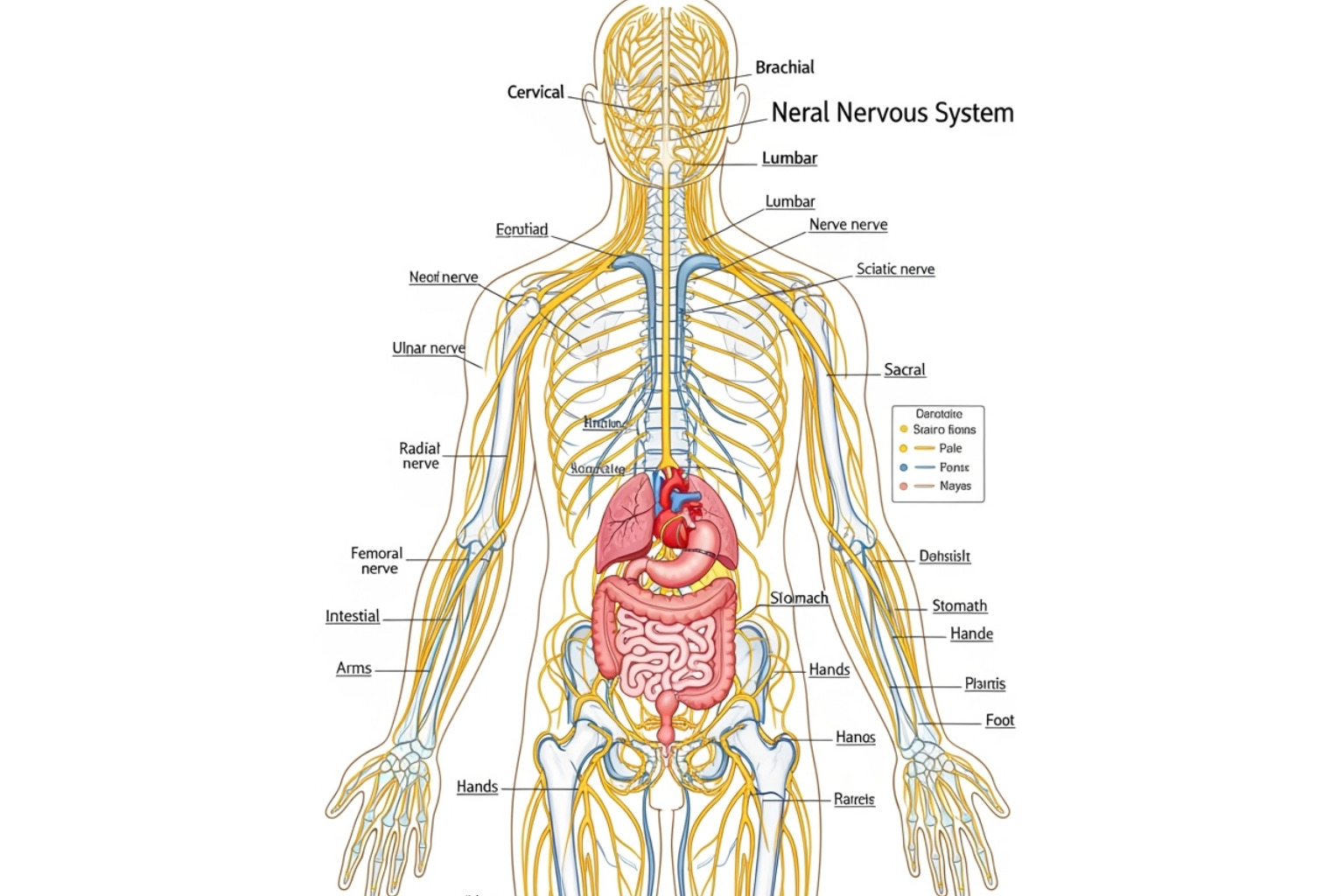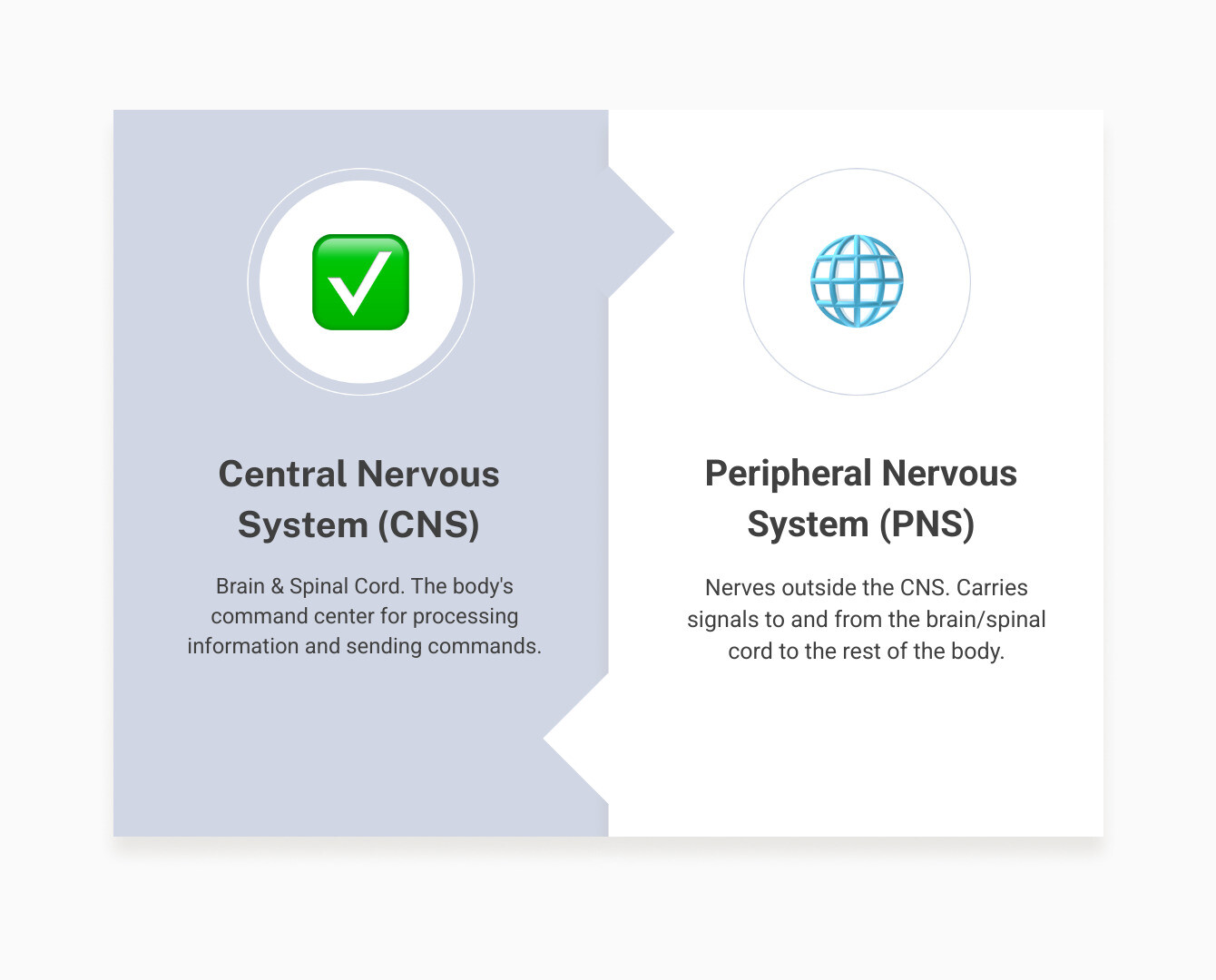Why Effective Treatment Matters for Foot Neuropathy
Treatment of peripheral neuropathy of the feet requires a multi-faceted approach to manage symptoms like burning, tingling, numbness, or pain. The key is to address the underlying cause while providing symptom relief.
Key Treatment Approaches:
- Medical Management: Controlling conditions like diabetes and treating vitamin deficiencies (B12, B6, E).
- Medications: Antidepressants (amitriptyline), anticonvulsants (gabapentin), and topical treatments (capsaicin, lidocaine).
- Physical Therapy: Strengthening exercises and balance training to reduce fall risk.
- Lifestyle Changes: Low-impact exercise, healthy diet, quitting smoking, and limiting alcohol.
- At-Home Care: Daily foot inspection, proper footwear, and topical relief creams.
- Complementary Therapies: Acupuncture, TENS, and relaxation techniques.
Important: Neuropathic pain rarely responds to common painkillers like ibuprofen. Specialized treatments targeting nerve signals are more effective.
Peripheral neuropathy is common, affecting an estimated 2.4% of the general population and rising to about 8% in people over 55. For people with diabetes, the rate is much higher—about half develop some form of peripheral neuropathy, often starting in the feet.
The condition can severely impact daily life, progressing from mild tingling to severe pain, muscle weakness, and balance issues. Loss of sensation can lead to unnoticed injuries, resulting in serious complications like foot ulcers or infections.
The good news is that treatment of peripheral neuropathy of the feet is possible. While reversing nerve damage is challenging, managing the underlying cause and addressing symptoms early can slow or halt its progression.
I'm Tony Enrico, and through my work developing Neuropasil's advanced pain relief formula, I've focused on helping individuals find effective relief from nerve pain. This guide will cover everything you need to know about treating peripheral neuropathy in your feet.

Handy treatment of peripheral neuropathy of the feet terms:
Understanding Peripheral Neuropathy in Your Feet
To understand the treatment of peripheral neuropathy of the feet, you need to know what's happening in your body. Your peripheral nervous system is a network of nerves that sends messages between your brain and the rest of your body. When these nerves are damaged (peripheral neuropathy), those messages get scrambled.

There are three types of peripheral nerves:
- Sensory nerves detect sensations like heat, cold, and pain. Damage causes numbness, tingling, or burning.
- Motor nerves control muscle movement. Damage leads to weakness and coordination problems.
- Autonomic nerves manage involuntary functions like heart rate and blood pressure.
Neuropathy often affects the feet first because the nerves traveling to your toes are the longest, making them more vulnerable to damage over their length.

What Causes Nerve Damage in the Feet?
Identifying the cause is key to effective treatment of peripheral neuropathy of the feet. Common culprits include:
- Diabetes: The leading cause. High blood sugar is toxic to nerves. About half of all people with diabetes develop neuropathy. The NIDDK provides detailed information on this link.
- Vitamin Deficiencies: A lack of vitamins B12, B1, B6, and E can impair nerve function. Too much B6 can also be toxic.
- Chronic Alcohol Use: Alcohol is directly toxic to nerve tissue and often leads to nutritional deficiencies.
- Autoimmune Diseases: Conditions like lupus and rheumatoid arthritis can cause the immune system to attack nerves.
- Infections: Viruses and bacteria like shingles, HIV, and Lyme disease can damage nerve tissue.
- Physical Injury: Trauma, repetitive motion, or compression can cause localized neuropathy.
- Other Causes: These include vascular problems, exposure to toxins, and side effects from medications like chemotherapy.
Common Symptoms and How It Feels
Symptoms vary but often include:
- Numbness or reduced sensation: A feeling of your feet being "asleep" or like you're wearing thick socks.
- Tingling or "pins and needles": A persistent prickling or crawling sensation.
- Burning pain: Can range from mild to intense, often worse at night.
- Sharp, stabbing, or electric-shock-like pains: Sudden, debilitating jolts.
- Loss of balance and coordination: Feeling unsteady due to a loss of spatial awareness in your feet.
- Muscle weakness: Difficulty lifting your foot (foot drop) or performing other movements.
- Extreme sensitivity to touch (allodynia): Pain from light touch, such as bedsheets.
These symptoms can significantly impact your quality of life. For more details, you can learn more about Peripheral Neuropathy Symptoms.
How Doctors Diagnose Foot Neuropathy
Diagnosing neuropathy involves several steps to find the underlying cause, which is essential for effective treatment of peripheral neuropathy of the feet.
- Medical History and Physical Exam: Your doctor will review your symptoms, lifestyle, and family history, and test your reflexes, muscle strength, and sensation.
- Blood Tests: These can identify diabetes, vitamin deficiencies, kidney or liver issues, and signs of abnormal immune function.
- Nerve Conduction Study (NCS): Measures how quickly electrical signals move through your nerves. Slower signals indicate damage.
- Electromyography (EMG): Measures electrical activity in muscles to determine if weakness is from nerve or muscle problems.
- Imaging Tests: An MRI or CT scan can reveal structural issues like herniated discs or tumors.
- Nerve or Skin Biopsy: In some cases, a small tissue sample is examined under a microscope to assess nerve damage.
An accurate diagnosis is the foundation of a targeted treatment plan. The Mayo Clinic offers a great guide to diagnosis.
Comprehensive Treatment of Peripheral Neuropathy of the Feet
Effective treatment of peripheral neuropathy of the feet aims to address the root cause, relieve symptoms, and improve your quality of life. The approach is highly personalized, as what works for one person may not work for another.
Medical Approaches to Managing Foot Neuropathy
Your healthcare provider will first identify and treat the underlying cause, such as controlling blood sugar in diabetes or correcting a vitamin deficiency. For symptom management, standard painkillers are often ineffective. Instead, doctors may prescribe:
- Anti-seizure medications: Gabapentin and pregabalin calm overactive nerve signals that cause burning or shooting pain.
- Antidepressants: Medications like duloxetine or amitriptyline alter how the brain processes pain signals, providing relief even without depression.
- Topical treatments: These are applied directly to the feet. Lidocaine patches numb the area, while capsaicin cream (from chili peppers) depletes the chemical that transmits pain signals. Remember to wash your hands after applying capsaicin.
Regular check-ups are vital to monitor your progress and adjust treatments as needed.
The Role of Physical Therapy and Supportive Footwear
Treatment of peripheral neuropathy of the feet extends beyond medication. Physical therapy and proper footwear are crucial for daily function.
A physical therapist can design a custom exercise program to strengthen weakened muscles, improve balance, and reduce your risk of falls. Balance training is especially important, as it helps your brain compensate for lost sensory feedback from your feet.
Your choice of footwear acts as armor for your feet. Look for shoes with a roomy toe box, good arch support, and ample cushioning. Avoid tight shoes and high heels. Custom orthotics can provide custom support and redistribute pressure. Assistive devices like canes or walkers can help you maintain independence and safety.
Complementary Approaches for Foot Neuropathy
Many people find relief by adding complementary therapies to their medical treatment. Always discuss these with your doctor first.
- Acupuncture: May help reduce neuropathic pain by stimulating the body's natural pain-relief mechanisms.
- TENS (transcutaneous electrical nerve stimulation): A small device delivers gentle electrical pulses to interrupt pain signals.
- Mind-body practices: Meditation, deep breathing, yoga, and tai chi can change your relationship with chronic pain and improve balance and flexibility.
- Massage therapy: Gentle massage can improve circulation and ease muscle tension.
- Nutritional supplements: Some studies suggest benefits from nutritional supplements like alpha-lipoic acid and certain B vitamins, but it's crucial to consult your doctor to avoid potential toxicity (e.g., from too much vitamin B6).
These approaches address the whole person—body and mind—which is invaluable when managing a chronic condition.
At-Home Care and Management for Foot Neuropathy
While medical treatments are vital, daily at-home care is where you take control of your comfort and quality of life. These practices are essential for managing peripheral neuropathy in your feet.
The cornerstone is daily foot inspection. Since you may not feel injuries, check your feet every day for cuts, blisters, redness, or swelling. Use a mirror to see the bottoms of your feet.
Proper hygiene is also key. Wash your feet daily with lukewarm water and mild soap, and dry them thoroughly, especially between the toes. Apply moisturizer to prevent cracking, but avoid the area between the toes.
Injury prevention should become second nature. Always wear shoes or slippers, even indoors. Check your shoes for foreign objects before putting them on. Trim toenails straight across to prevent ingrown nails. Consider seeing a podiatrist for regular nail care.
Topical Solutions for Soothing Relief
For the burning, tingling, and aching of foot neuropathy, targeted topical solutions can provide essential, immediate relief.
At Neuropasil, we developed our natural, fast-acting creams for this exact purpose. Our blend of Aloe, Urea, and Menthol provides soothing relief right where you need it. Customers use Neuropasil for a wide range of conditions, including neuropathy, sciatica, fibromyalgia, and general aches and pains. Athletes also use it for muscle recovery.
When choosing a topical solution for treatment of peripheral neuropathy of the feet, key ingredients matter. Menthol creates a cooling sensation that distracts from pain. Capsaicin works over time to reduce pain signals. Aloe vera soothes irritated skin, and Urea moisturizes and softens dry skin.
For best results, apply a thin layer to clean, dry skin and massage it in gently. Always wash your hands after application, especially with capsaicin-based products. You can find natural solutions for nerve pain that work quickly to help you get back to your life.
Lifestyle Changes for Treatment of Peripheral Neuropathy of the Feet
The daily choices you make can have a transformative impact on treatment of peripheral neuropathy of the feet.
- Healthy Diet: Focus on fruits, vegetables, whole grains, lean proteins, and healthy fats. Anti-inflammatory foods like berries and fatty fish can help calm nerve pain. For diabetics, a balanced diet is critical for blood sugar control.
- Regular Exercise: Movement is medicine. Choose low-impact activities like walking, swimming, or stationary cycling. Mind-body practices like yoga and Tai Chi improve balance and reduce stress. Aim for 30 minutes most days, but consult your doctor first.
- Quit Smoking: Smoking constricts blood vessels, reducing blood flow to your nerves. Quitting is one of the most impactful changes you can make.
- Limit Alcohol: Excessive alcohol is a direct cause of nerve damage and can worsen existing neuropathy.
- Maintain a Healthy Weight: Losing excess weight reduces pressure on your nerves and helps manage conditions like diabetes that worsen neuropathy.
- Blood Sugar Control: For those with diabetes, this is paramount. Consistent blood sugar control is your best defense against further nerve damage. For more guidance, explore our insights on Diabetic Foot Pain.
Together, these changes form a powerful strategy for taking control of your foot health.
When to Seek Professional Help and Long-Term Outlook
Living with peripheral neuropathy requires knowing when to call your doctor. While many symptoms are manageable at home, some warning signs should never be ignored.
Seek professional help if you experience:
- Sudden, intense, or unbearable pain that disrupts your daily life.
- Symptoms spreading up your legs or into your hands.
- A foot injury that isn't healing, or signs of infection like redness, swelling, warmth, or discharge. Because you may not feel pain, daily foot inspection is critical.
- New muscle weakness, frequent falls, or sudden difficulty walking.
- Changes in bowel, bladder, or sexual function, which could indicate autonomic nerve involvement.
Your doctor may need to reassess your condition or adjust your treatment of peripheral neuropathy of the feet.
Understanding Your Long-Term Prognosis
The long-term outlook for peripheral neuropathy depends on its cause, its severity at diagnosis, and how consistently you manage the underlying condition.
Can it be reversed? Sometimes. If caused by a treatable condition like a vitamin deficiency or a specific medication, addressing the issue can allow nerves to heal. Early-stage diabetic neuropathy may also improve with tight blood sugar control.
However, in many cases, especially with long-standing conditions, the nerve damage may be permanent. But permanent does not mean hopeless. Even when damage can't be reversed, the right treatment can stop it from getting worse, reduce your symptoms, and help you maintain an excellent quality of life.
Your active participation is key. For diabetics, consistent blood sugar management can dramatically slow or halt the progression of neuropathy. Regular check-ups with your healthcare team are essential to monitor your condition and fine-tune your treatment plan.
Living with neuropathy is challenging, but with a comprehensive approach—combining medical care, physical therapy, lifestyle changes, and topical relief like Neuropasil—many people find significant relief and lead active, fulfilling lives.
Frequently Asked Questions about Foot Neuropathy Treatment
Here are clear, straightforward answers to common questions about the treatment of peripheral neuropathy of the feet.
Can peripheral neuropathy in the feet be reversed?
Whether neuropathy can be reversed depends on the cause. In some cases, yes. If it's from a vitamin deficiency or a medication side effect, addressing the root cause can allow nerves to heal. However, for chronic conditions like long-standing diabetes, the damage may be permanent.
Even if it can't be reversed, treatment can stop the progression and manage symptoms effectively. The focus shifts to preventing further damage and improving your quality of life, which is a significant victory.
Are common painkillers like ibuprofen effective for nerve pain?
Unfortunately, no. Neuropathic pain typically does not respond to standard over-the-counter painkillers like ibuprofen (NSAIDs) or acetaminophen. This is because nerve pain originates from damaged nerves sending faulty signals, a different mechanism than the inflammation or injury these drugs target.
Topical solutions and specific prescription medications are more effective. Medications like gabapentin calm overactive nerves, while certain antidepressants change how the brain processes pain. Topical treatments like capsaicin cream or soothing formulas like Neuropasil with menthol provide targeted relief directly on the skin. Discuss options with your doctor to find what works best for you.
What is the best exercise for someone with foot neuropathy?
Exercise is a powerful tool for managing neuropathy. The key is to choose safe, effective activities.
- Low-impact activities are best. Walking, swimming, and stationary cycling are excellent choices because they improve circulation without stressing your feet.
- Balance exercises like Tai Chi and yoga are highly beneficial. They improve stability, reduce fall risk, and help manage the stress of chronic pain.
- Simple foot and ankle strengthening exercises can also make a big difference.
Always consult a doctor or physical therapist before starting a new exercise routine. They can help you create a safe and personalized program. The goal is consistent, enjoyable movement, which improves circulation and reduces inflammation.
Conclusion: Taking Control of Your Foot Health
Living with peripheral neuropathy in your feet is challenging, but you have more control than you might think. A comprehensive treatment of peripheral neuropathy of the feet is the key to managing your symptoms and reclaiming your life.
This isn't about a single magic bullet. It's about a personalized strategy that combines:
- Medical Care: Addressing underlying causes like diabetes.
- Symptom Relief: Using effective medications and topical solutions like Neuropasil.
- Lifestyle Changes: Embracing a healthy diet, regular exercise, and proper at-home foot care.
Knowledge is power. By understanding your condition and actively participating in your treatment, you become an empowered advocate for your own health. You are not just managing a condition; you are taking charge of your well-being.
Your feet carry you through life, and they deserve your care. It's never too late to take the next step toward relief. Work with your healthcare team, stay consistent, and explore all the tools available to you.
Your journey with neuropathy is ongoing, but you don't have to walk it alone. To continue learning, we invite you to explore more articles on neuropathy management. Each step you take is a step toward a more comfortable and active life.
References / Sources
This guide on the treatment of peripheral neuropathy of the feet draws from trusted medical institutions to provide accurate, reliable information. All statistics and factual claims in this guide are based on the credible sources listed below.
- [Cleveland Clinic's comprehensive overview of peripheral neuropathy](https://my.clevelandclinic.org/health/diseases/14737-peripheral-neuropathy): Sourced prevalence statistics, information on supplements (alpha-lipoic acid), and the ineffectiveness of OTC painkillers for nerve pain.
- [Mayo Clinic's guide to peripheral neuropathy](https://www.mayoclinic.org/diseases-conditions/peripheral-neuropathy/diagnosis-treatment/drc-20352067): Provided insights into the diagnostic process, treatment options, and prognosis, including reversibility.
- [Mayo Clinic's overview of symptoms and causes](https://www.mayoclinic.org/diseases-conditions/peripheral-neuropathy/symptoms-causes/syc-20352061): Sourced information on causes, including vitamin B6 toxicity.
- [National Institute of Diabetes and Digestive and Kidney Diseases (NIDDK)](https://www.niddk.nih.gov/health-information/diabetes/overview/preventing-problems/nerve-damage-diabetic-neuropathies): Offered detailed information and statistics on diabetic neuropathy.
Additional insights were gathered from specialized sources, including:
- [Dr. Kelly L. Geoghan's article on nonsurgical treatments](https://www.flawlessfeet.net/blog/4-nonsurgical-treatments-for-peripheral-neuropathy)
- [KC Health & Sport blog on alternative therapies](https://kchealthandsport.com/blog/2024-04-alternative-therapies-for-peripheral-neuropathy)
- [Lalazilla's treatment guide](https://www.lalazilla.com/blogs/daily-lifestyle-blogs/13-best-treatments-for-peripheral-neuropathy-of-feet?srsltid=AfmBOopEUxx2wEyAEoL5Gtf7ztKLdGqXpDTJ55PLkSHmnTvCDEdbfrnB)
- [Nupera's natural treatment resources](https://nupera.com/diabetic-peripheral-neuropathy-natural-treatment/)
We also consulted regional health authorities like MyHealth.Alberta.ca and organizations like Healthwise, LLC (whose standards are found at their about page) to verify medical facts.














